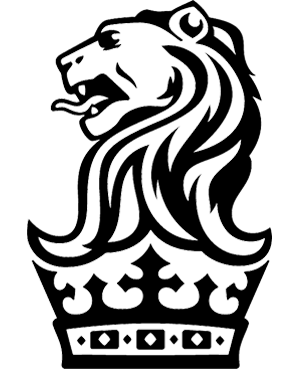Tags
#Orientation
Make the CEO an integral part of the onboarding process
At Chick-fil-A the CEO takes an active role in making new hires feel welcome. While it is common practice for the CEO to sit with new employees at company events, the biggest impact this leader makes is on the employees' first day.
Franchisees and office staff are welcomed with an organizational culture tour lead by the CEO. The day begins with a bus tour to the original restaurant and then to other meaningful locations in Chick-fil-A's history. There are additional stops to meet company vendors and to see firsthand the charitable work the brand supports. The day ends at the CEO's home, where dinner is served.
Nudge your new hires to be proactive
During orientation, Google sets aside 15-min to explain to Nooglers the benefits of being proactive, and provides them with five specific actions to take:
- Ask questions, lots of questions!
- Schedule regular 1:1s with your manager
- Get to know your team
- Actively solicit feedback—don't wait for it!
- Accept the challenge (ie. take risks and don't be afraid to fail...other Googlers will support you).
As an experiment, two weeks after orientation, some Nooglers received a follow-up email reminding them of these five actions. Those who received this nudge were "more likely to ask for feedback, became productive faster, and tended to have a more accurate sense of their own performance than" those who didn't receive the email. Google now sends this reminder to all Nooglers.
Make orientation about your purpose and your people
The Ritz-Carlton's two day orientation always begins with top executives personally greeting each new hire. It lets new employees know that the company prioritizes people over paperwork, processes, and rules. Even as they are served lunch, new hires are surprised with favorite snacks that they had mentioned during their interview process.
As Day One begins, it is also a tradition for the President and COO to lead its discussions. Former President Horst Schulze always liked to stress the importance of every person there with these opening remarks:
"Good morning. My name is Horst Schulze. I am president and COO of this organization, and I am very important around here. But so are you! No human being should claim to be superior to the next human being. You are equally as important to this company as I am. Why is that? Because you are going to make a critical contribution here. If I don't show up for work until tomorrow afternoon, few people will notice! But if one of you in housekeeping doesn't show up, the beds won't get made. We won't be able to check in new guests for tomorrow night. The financial hit will be immediate. We will have a disaster on our hands!"
The rest of the orientation is filled with interactive discussions about:
- The company's history, purpose, and Gold Standards
- What it means to be the top 1% of an industry
- The importance of the customer
- What drives the customer experience
- The importance of financial soundness
Managers go through an additional day of orientation where they discuss the importance of respecting their staff, how to facilitate ongoing career discussions, and how to be a mentor.
Don't let anyone start working until after orientation
No one at The Ritz-Carlton can start their actual job until they complete orientation...no exceptions. And since orientation only happens once a month, The Ritz-Carlton has even lost some new recruits because they needed to start a job right away.
Increase empathy by putting yourself in another employee's shoes
Southwest builds empathy among staff and accelerates their development by finding ways for employees to understand the job roles of other staff through shared experiences:
- The Cutting Edge Program: Throughout the year, Southwest pilots will work side-by-side with Ramp Agents to learn first hand about what goes on underneath the plane when it's at the gate. Pilots help with unloading bags, dumping lavatories, and fueling the jets.
- Customer Relationship Training: New Customer Relations Representatives go through four weeks of training which includes firsthand experience in all things customer service, like selling tickets, issuing boarding passes, and tagging bags. They also shadow senior Representatives as they take calls and work on the computer for a week before they even can answer a call themselves.
- Walk a Mile in My Shoes: For six months one year, employees and leaders were asked (not required) to come in on their day off and visit a different department or other station and spend six hours "walking in the shoes" of another employee. Over a 6-month period, 75% of employees participated. Read the experience of one Ramp Supervisor.
- A Day in the Field: This experience is practiced all year long, and is specifically for Officers and Directors to spend several hours and sometimes days working alongside staff to better understand their roles and to say that they can truly "walk the talk."
Take the competition seriously but not yourself
If you want your staff to bring joy into the lives of your customers, you first have to bring joy into the lives of your staff. Southwest's co-founder and former CEO, Herb Kelleher, was a firm believer in leadership cutting through the tensions of work by being humble and never taking themselves seriously. He embodied this value most of all, and was completely unconcerned about looking foolish in front of his staff. During his time as CEO, he:
- Showed up at one of the company's hangars on Halloween dressed in drag with a feathered boa
- Appeared in print ads as Elvis Presley
- Was escorted to the stage in a straight jacket to celebrate Southwest's 25th anniversary
- Rapped in the employee produced video, "Southwest Shuffle," which became part of employee orientation
Set clear standards for service excellence
On their first day, each Starbucks partner (employee) is given a little 'Green Apron' book that fits neatly into their apron pocket. The book outlines the Five Ways of Being. which is the framework that the Starbucks Experience is built upon.
- Be Welcoming: Offer everyone a sense of belonging.
It's not just about writing a person's name on a cup. It's about taking the time to know their name, needs, and preferences when they walk in the door. As a study aid, some partners even keep spreadsheets containing customer preferences. - Be Genuine: Connect, discover, respond.
Connect with customers, so they know they are not just a "wallet with a human attached." If they are visibly having a bad day, try to make it better. Discover their wants and desires by asking questions that require more than a 'yes' or 'no' answer and listening to their response. You might just learn about needs that they didn't know they had. Finally, respond with respect and attention no matter who they are. - Be Considerate: Take care of yourself, each other, and the environment.
Don't just think of the now but be mindful of the future well-being of everyone and everything. It's not just about short-term gain but rather long-term survival and prosperity. - Be Knowledgeable: Love what you do. Share it with others.
"Sharing knowledge with customers makes for more sophisticated consumers." They in turn begin to understand, appreciate, and explore the subtle nuances of what you have to offer. - Be Involved: Connect with one another, with the company, and with your community.
Look around to see how to make things better, and then act on it. Partners have hosted open-mic nights, provided free-training to the unemployed, and even taken sign language lessons, so they can communicate with their customers.





